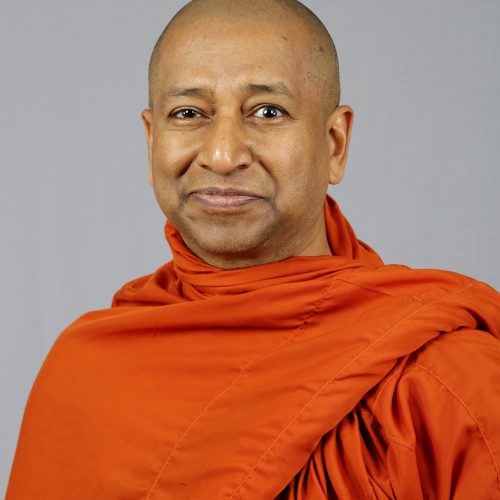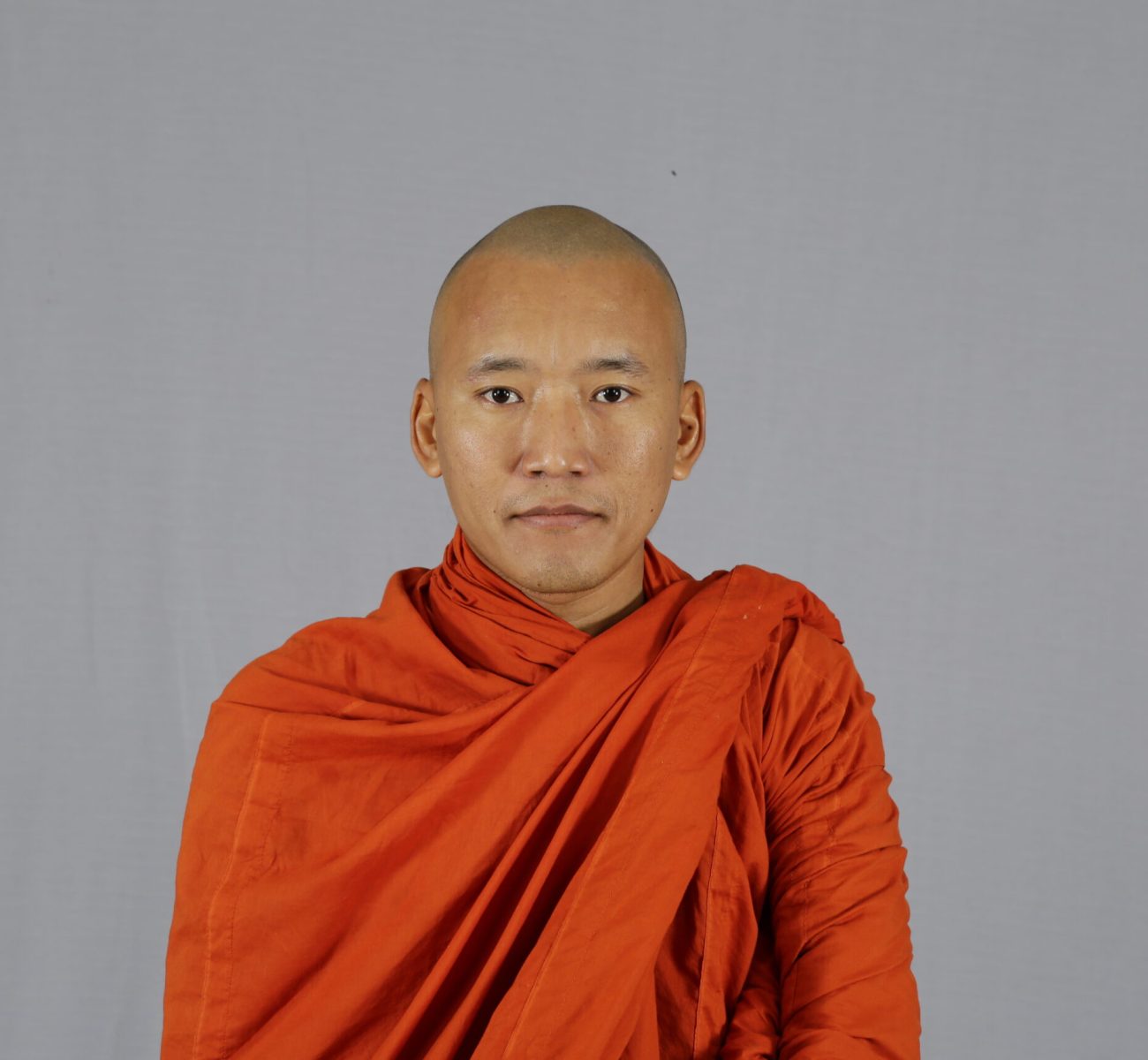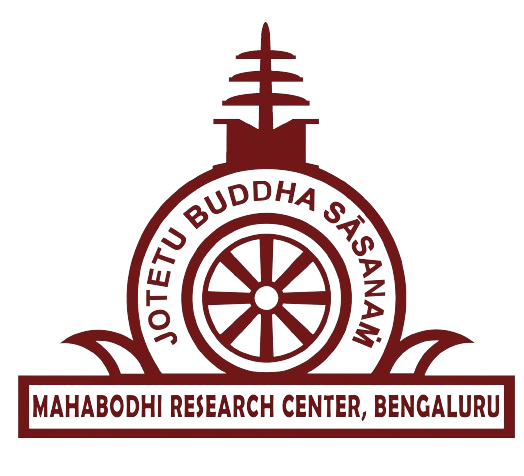Mahabodhi Research Centre
(Affiliated to Jain (Deemed to be University)
Ph.D Syllabus
Omniscient Buddha, the Protectors Gem
1.1 Four Great Omens
1.2 Six Years of Painful Self-torture
1.3 The golden mean
1.4 Enlightenment Day
1.5 Realization of Supreme Enlightenment
1.6 Advent of the Tathägata, the Bearer of Truth
1.7 Seven Weeks in Sublime Ecstasy
1.8 Weeklong meditative absorption under the Mahabodhi Tree
1.9 Weeklong gaze at the Mahabodhi Tree
1.10 Weeklong walking meditation
1.11 Weeklong contemplation in the Jewel Pavilion
1.12 Weeklong contemplation under Ajapala Banyan Tree
1.13 Weeklong Absorption under Mucalinda Tree
1.14 Weeklong stay under the Rajayatana Tree
1.15 Brahma's request to teach the Dhamma
1.16 Whom to Preach the Dhamma First
The Buddha's Mission of Compassion
2.1 First sermon -briefly
2.2 Discourse on Characteristics of Non-Self
2.3 First Rain's Retreat
2.4 Thirty Princes
2.5 Three Hermit Brothers
2.6 The Fire Discourse
2.7 Story of the Departed Relatives
3.1 Chronology of events
3.2 Veluvana Monastery
3.3 Jetavana Monastery, Anathapindika, feeder of the destitutes
3.4 Perpetual support
3.5 King Suddhodana Sends Missions
3.6 Buddha walks to Kapilavatthu
3.7 The King pays homage for the third time
3.8 Teaching on the Jewelled Walkway
3.9 Discourse on Buddhavarnsa
3.10 Tathagata goes on alms-round
3.11 Prince Nanda's ordination
3.12 Ordination of prince Rähula
3.13 King Suddhodana becomes an Anagami, Non-Returner
3.14 Thousand Princes become monks
3.15 Six princes and Upali the barber
3.16 Attainments of six princes at Veluvana
4.1 First five disciples
4.2 Testimony of Buddha's Discovery
4.3 Venerable Assaji
4.4 Two chief disciples, Ven. Säriputta and Ven. Mahamoggallana 152
4.5 Venerable Kassapa
4.6 Venerable Elder Nanda
4.7 Venerable Rahula
4.8 Venerable Ananda
4 9 Venerable Kumara Kassapa
4.10 The Establishment of the order of Nuns, Bhikkhuni Sangha
4.11 Buddha's Forty-five Rain's Retreats
4.12 The Buddha's second, third and fourth Rain's Retreats
4.1 First five disciples
4.2 Testimony of Buddha's Discovery
4.3 Venerable Assaji
4.4 Two chief
5.1 The Universe and the Beyond in Buddhism
5.2 31 Planes of Existence
5.3 Noble Ones (Ariyas)
5.4 Parami = Perfection
5.5 The Nether worlds of woe
5.6 The concept of god and Souls
disciples, Ven. Säriputta and Ven. Mahamoggallana 152
4.5 Venerable Kassapa
4.6 Venerable Elder Nanda
4.7 Venerable Rahula
4.8 Venerable Ananda
4 9 Venerable Kumara Kassapa
4.10 The Establishment of the order of Nuns, Bhikkhuni Sangha
4.11 Buddha's Forty-five Rain's Retreats
4.12 The Buddha's second, third and fourth Rain's Retreats
6.1 Dependent Origination
6.2 The Law of Kamma and Rebirth
6.3 Misconceptions of Kamma
6.4 Rebirth
6.5 Moral Causation
6.6 Two sets of Truth
6.7 Nature of mind and Mental factors
6.8 Matter and that which transcends all
Diploma in Theravada Buddhist Studies – I Year Course
SYLLABUS
1 | History – Definition and Development | 5 |
2 | Pali Grammer Lesson 1 to 10 | 30 |
3 | Six Great Councils | 5 |
4 | Vinaya Pitaka in Brief | 10 |
5 | Sutta Pitaka in Brief | 10 |
6 | Abhidhamma Pitaka in Brief | 10 |
7 | India – Home land of Buddhism | 15 |
8 | Buddhism in Modern World | 15 |
| Marks | 100 |
Reference Books:
- Comprehensive Pali Course Part
Author - Venerable Acharya Buddharakkhita
Published by - Buddha Vachana Trust, Maha Bodhi Society, Bangalore (2006)
- History of Pali language and Literature
Author - Venerable Acharya Buddharakkhita
Published by - Buddha Vachana Trust, Maha Bodhi Society, Bangalore (2005)
- 2500 years of Buddhism,
Author – P. V. BAPAT
Publishers by – Publication Division, Ministry of Information and broadcasting, Govt. of India 1956)
1 | Bodhisatva Ideal, Meaning of Term Buddha | 10 |
2 | Birth , Education and Marriage | 5 |
3 | Four Sights and Renunciation | 10 |
4 | six Years of painful self torture | 5 |
5 | Enlightenment | 10 |
6 | Seven Weeks of Meditation | 5 |
7 | DhammacakkaPavattana sutta – The first sermon | 10 |
8 | Four Noble Truths and Eight Fold Path | 10 |
9 | The Buddha’s mission of compassion | 10 |
10 | Bhavana - Four protective Meditations | 10 |
11 | Sila-Samadhi-Panya – Core teaching of Buddhas | 10 |
12 | The Mahapainibbana | 5 |
| Total | 100 |
Reference Books:
- Basic of Buddhism part – 1 and 2 by Venerable Acharya Buddharakkhita
Published by - Buddha Vachana Trust, Maha Bodhi Society, Bangalore (2005)
1 | Introduction to Vinaya Pitaka | 5 |
2 | Parajika Pali in Brief | 10 |
3 | Pacitiya Pali in Brief | 10 |
4 | Mahavagga Pali in Brief | 10 |
5 | Culavagga Pali in Brief | 10 |
6 | Parivara Pali in Brief | 10 |
7 | The vinaya and Patimokkha | 10 |
8 | Sila- For Lay Upasika and Upasaka | 10 |
9 | Uposatha and Observances | 5 |
10 | Buddhist monks and nuns | 10 |
11 | Civara and Ordination | 5 |
12 | Rains Retreat | 5 |
| Total | 100 |
Reference books:
- Guide to Tipitaka – U Ko Lay
Published by - Sri Sadguru Publications, Indian book Centre - Delhi (1990)
- The Bhikkhu’s Rules - A Guide for Lay People by Bhikkhu Ariyesako
SanghalokaForestHermitage, Australia (1998)
1 | Introduction to Sutta Pitaka | 5 |
2 | Kutadanta Sutta – DN 5 | 10 |
3 | Sigalovada Sutta – DN31 | 10 |
4 | Sammaditthi Sutta – MN 9 | 10 |
5 | DakkhinaVibhanga Sutta – MN42 | 10 |
6 | DhammacakkaPavattana Sutta – SN 56.11 | 20 |
7 | DuccaritaVipaka Sutta – AtthakaNipata AN40 | 10 |
8 | Kalama Sutta – Tika Nipata- AN 65 | 10 |
9 | Dhammapada – Two Chapters - KN | 15 |
| Total | 100 |
Reference books:
- The long discourses of the Buddha : A translation of the DighaNikaya by Maurice Walshe, Wisdom publication, Boston (1987)
- The middle Length Discourses of the Buddha: a new English translation of the MajjhimaNikaya By Bhikkhu Nyanamoli& Bhikkhu Bodhi, Wisdom Publications, Boston (2000)
- The Connected Discourses of the Buddha: a new translation of the SamyuttaNikaya
By Bhikkhu Bodhi, Wisdom Publications, Boston (1995)
- The Numerical Discourses of the Buddha: a new Translation of the AnguttaraNikaya
By Bhikkhu Bodhi, Wisdom Publication, Boston (2012)
- KhuddakaNikaya – The Dhammapada – A practical guide for Right Living
Author -Venerable Acharya Buddharakkhita
Published by - Buddha Vachana Trust, Maha Bodhi Society, Bangalore (2005)
# Pali Text – Pali text society, London/ Vipassana Research Institute- Mumbai
1 | Introduction to Abhidhamma Pitaka | 10 |
2 | Dhammasangani in Brief | 10 |
3 | Vibhanga in Brief | 10 |
4 | Dhatu Katha in Brief | 10 |
5 | Puggalapanyati in Brief | 10 |
6 | Katha Vatthu in Brief | 10 |
7 | Yamaka in Brief | 10 |
8 | Pattana in Brief | 10 |
9 | Citta – Conciousness | 10 |
10 | Cetasika – Mental Factors | 10 |
Reference books:
- Guide to Tipitaka – U Ko Lay
Published by - Sri Sadguru Publications, Indian Book Centre - Delhi – India (1990)
- Manual of Abhidhamma by Venerable Narada (Chapter 1 and 2)
Buddhist Missionary Society, Malaysia (1987)
Certificate course in Theravada Buddhist Studies – 6 months
SYLLABUS
1 | Scope – History, Definition, Origin | 5 |
2 | Development – Home of pali, Chronology | 5 |
3 | Pali Grammar 1 – 5 | 30 |
4 | First Great Council | 10 |
6 | Canonical Literature of Vinaya Pitaka | 15 |
7 | Canonical Literature of Sutta Pitaka | 10 |
8 | Canonical Literature of Abhidhamma Pitaka | 10 |
9 | Canonical Literature of Dhammapada – Selected Verses | 15 |
| Total | 100 |
Reference Books:
- Comprehensive Pali Course Part 1
Author - Venerable Dr. Acharya Buddharakkhita
Published by - Buddha Vachana Trust, Maha Bodhi Society, Bangalore (2006)
- 2. History of Pali language and Literature Author - Venerable Acharya Buddharakkhita
Published by - Buddha Vachana Trust, Maha Bodhi Society, Bangalore (2005)
1 | BodhisatvaSumedha | 10 |
2 | Birth | 5 |
3 | Education | 5 |
4 | Marriage | 5 |
5 | Four Sight | 10 |
6 | Renunciation | 5 |
7 | 6 years Ascetic Practice | 10 |
8 | Enlightenment | 10 |
9 | Dhamma Desana | 10 |
10 | Four Noble Truth | 10 |
11 | Noble Eight Fold Path | 10 |
12 | Mahaparinibbana | 10 |
| Total | 100 |
Reference Books:
- Buddha And his Dhamma - Part 1
Author - Venerable Acharya Buddharakkhita
Published by - Buddha Vachana Trust, Maha Bodhi Society, Bangalore (Revised Edition 2011)
BACHELOR AND MASTER Curriculum
- Introduction to Vinaya both as Theory and Practice
- Study of the various parts of the Vinaya as rules of Moral Discipline
- Vinaya as "The Life blood of Dhamma"
- Importance of disciplined conduct in Theravada.
- The background stories of Vinaya rules reveal their spiritual importance.
- The practical Handbook called Patimokkha as the essential core of the monastic discipline.
- Violation of monastic conduct in the form of the seven 'Offences - apattis'
- A general review of the concept of Sikkhapada - Vinaya discipline and apattis their violations.
- Sutta pitaka uses conventional languages to enunciate and practice the Dhamma as distinct from Abhidhamma's non-conventional, paramattha ultimate terms.
- Introduction to the SuttanataPitaka and how it differs from the Vinaya and Abhidhamma Pitakas.
- Dhammacakkapavatana Sutta - Basic teaching of the Buddha on four Noble Truths.
- Topics of Dhammacakkappavattana sutta. The two extremes.
- The Middle Path was distinct from the two extremes.
- The Three phases and twelve ways of the Wheel of truth Sutta.
- Digha, Majjhima, Kuddaka, Anguttara, SamyuttaNikayas-study of selected suttas
Introduction to the Abhidhamma Pitaka and how it is distinct from Vinaya and Sutta Pitakas. The distinction between pannatti (conventional) and paramattha (ultimate) dhammas. The various categories of analysis of paramatthaCitta, consciousness analyzed into 89 or 121 states Cetasikas constitute mental factors of consciousness. What is cetasika. The four characteristics of cetasika as it functions as an associate of citta. What is the nature of Citta (interpretation). How to associate citta and cetasika dhammas - sampayoga. How cetasikas are associated with cittas - sahagata. How cetasikas function as associates of a citta.
Introduction to the Abhidhamma Pitaka and how it is distinct from Vinaya and Sutta Pitakas. The distinction between pannatti (conventional) and paramattha (ultimate) dhammas. The various categories of analysis of paramatthaCitta, consciousness analyzed into 89 or 121 states Cetasikas constitute mental factors of consciousness. What is cetasika. The four characteristics of cetasika as it functions as an associate of citta. What is the nature of Citta (interpretation). How to associate citta and cetasika dhammas - sampayoga. How cetasikas are associated with cittas - sahagata. How cetasikas function as associates of a citta.
- The significance of the 3 Ratanas, The three ways of paying homage.
- The highest attributes of the threefold refuge.
- The basic concepts that everyone should understand. What is wholesome, (Kusala), unwholesome, (Akusala) - Good and Bad, they are the actual qualities and knowledge.
- The ten meritorious and the ten de-meritorious actions form one's conduct, thus making life upward-moving or downward-moving the mental development.
- The threefold basic principle : Dana, Sila, Bhavana and Sila, Samadhi, Panya
- The ten perfections - Paramis.
- Understanding the significance of kamma and its result in life
- The common pali sutta chanting and elaboration of these chanting
- Four sublime states - Brahma Viharas - Metta, Karuna, Mudita, Uppekkha How to radiate and how they differ from each other.
- Benefits of meditation in Theravada Buddhism
- Samatha and Vipassana Meditation.
- Meditation and its 40 subjects.
- Buddha's birth and early life
- Various early life events - Mahabhinikkhamana
- Buddhas' struggle for enlightenment - 6 years of penance
- The basic fallacies of self-mortification and sensual indulgence.
- The struggle for Enlightenment - Bodhi a detailed study
- Setting in motion the Wheel of Truth - Dhammacakkappavattana
- The spreading of the Dhamma - Establishment of Sangha
- Formation of the holy order of Nuns - Bhikkhunis
- The Great Demise - Mahaparinirvana.
- To learn pali canonical language
- Pali Grammar
- Pali language history
- Pali literature
- Pali works
Faculties

Bhikkhu Ananda
Suttapitaka
080 – 41104680
bhante36@yahoo.com

Bhikkhu Buddhadatta
Vinaya pitaka
080 – 41104680
buddhadatta21@gmail.com

Bhikkhu Buddhapala
Suttapitaka
080 – 41104680
buddhapala25@gmail.com

Bhikkhu Jinavamsa
Pali Language
080 – 41104680
jinavamsabhante@gmail.com

Dr. K Ramachandra
Abhidhammapitaka
080 – 41104680
jinavamsabhante@gmail.com

Mahadevaiah K
Abhidhammapitaka
94481 02629
kmahadevasv@gmail.com

Rajendra P
Life of Buddha
9916460113
rajendradtl@gmail.com

Rahul Rao
Pali Literature
9920059856
rao0729@gmail.com
Siddharth Ambrit
Pali Literature
9821704044
srambrit@gmail.com
